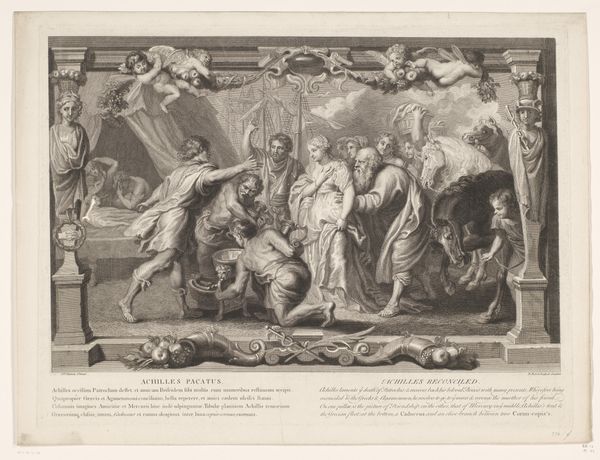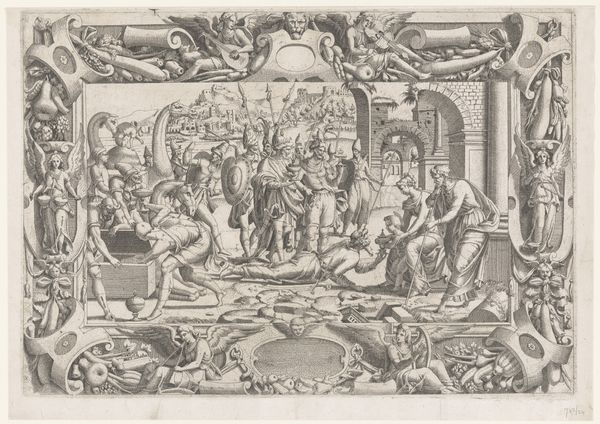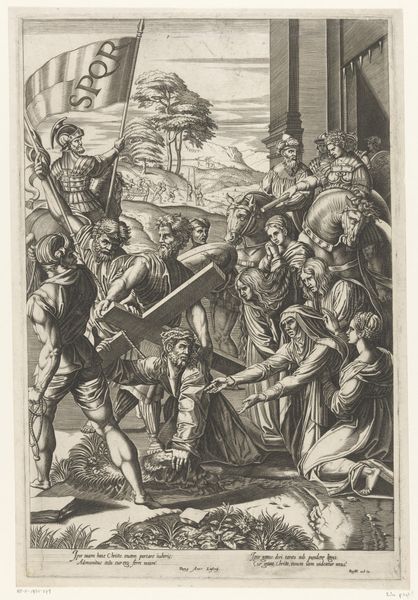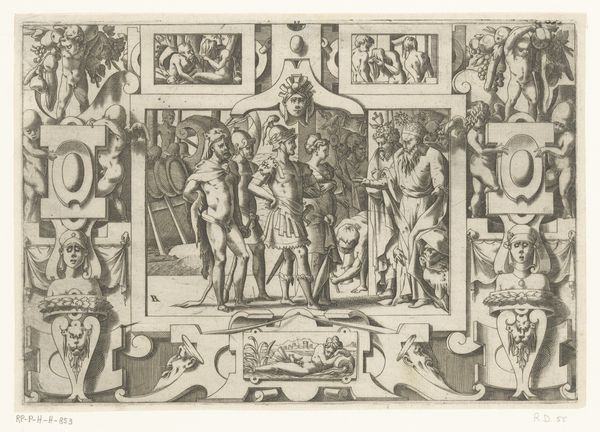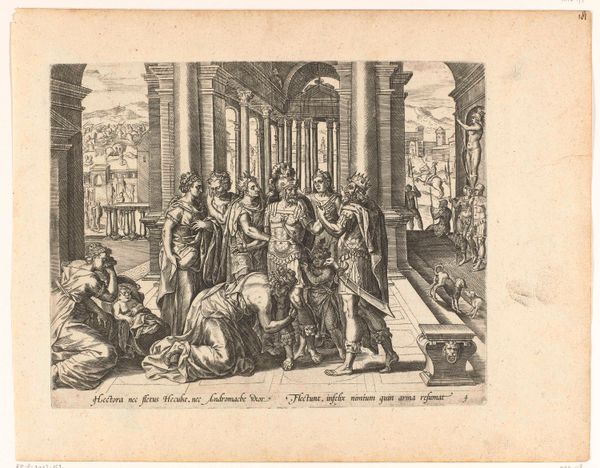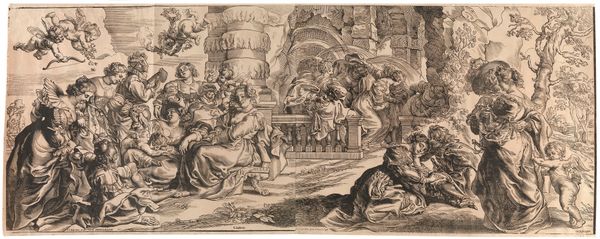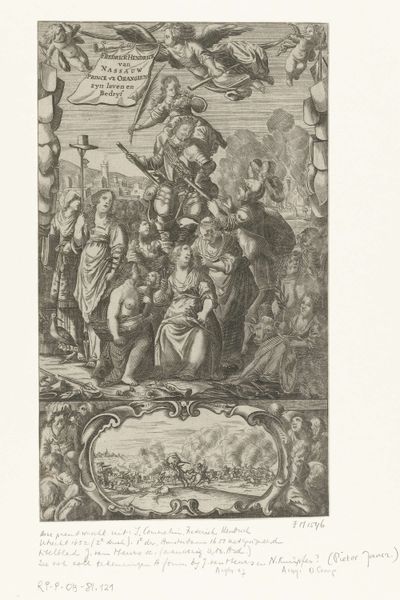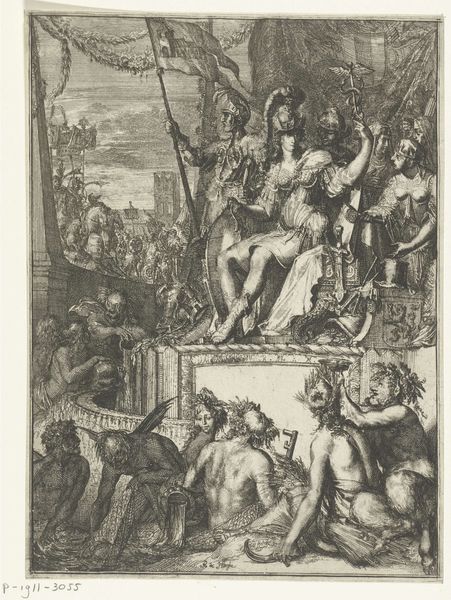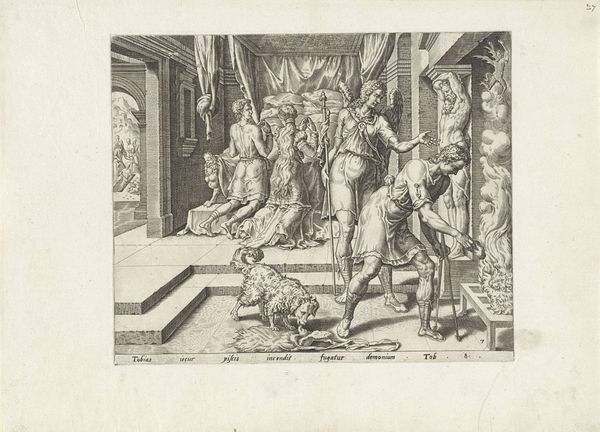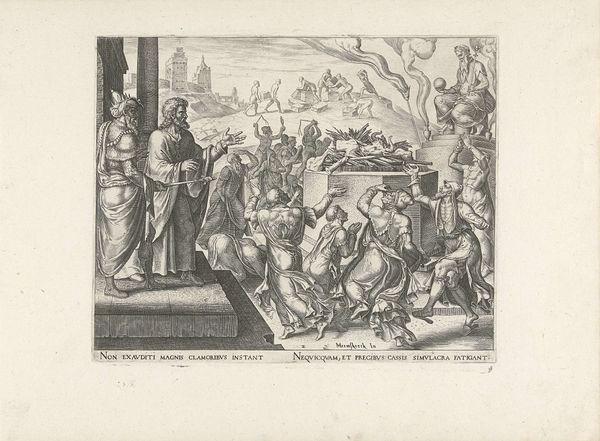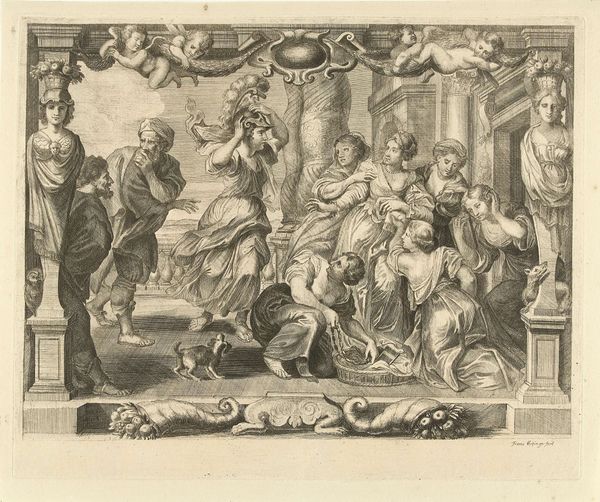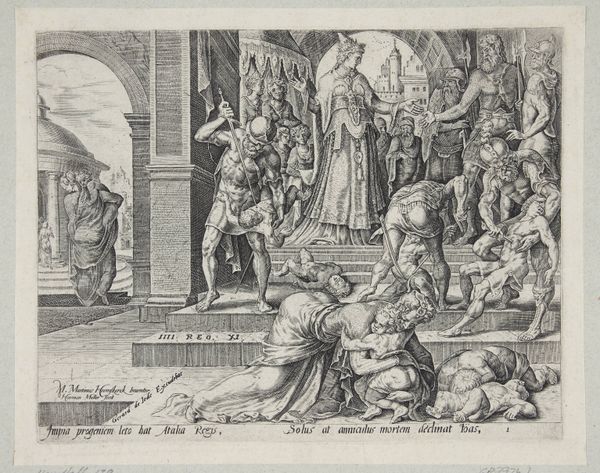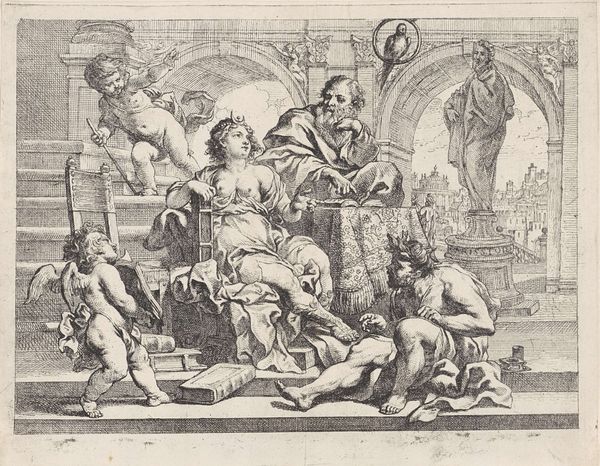
engraving
#
narrative-art
#
baroque
#
classical-realism
#
figuration
#
history-painting
#
engraving
Dimensions: height 316 mm, width 386 mm
Copyright: Rijks Museum: Open Domain
Curator: Welcome. We're looking at "Achilles en Polyxena," an engraving dating back to 1679. It’s part of the Rijksmuseum’s collection and was created by Franz Ertinger after a design by Franz van den Wyngaerde. What’s your initial impression of this intricate scene? Editor: A whirlwind. It feels both opulent and chaotic—a Baroque balancing act, I suppose. The sheer volume of figures vying for attention is slightly overwhelming, almost like eavesdropping on a very intense theatrical production. What’s the story it's trying to tell? Curator: This engraving captures a key moment from the Trojan War. It depicts Achilles' infatuation with Polyxena, daughter of King Priam. According to some accounts, Achilles offered to end the war in exchange for her hand, a detail that would obviously have serious socio-political ramifications. Editor: Right, a war for love – talk about leveraging your power. Do you think the artist aimed for drama or a more sympathetic angle, especially towards Polyxena? Her downcast gaze says a lot. Curator: Ertinger, through Wyngaerde's design, likely aimed for high drama, characteristic of the Baroque era and the tradition of classical realism. The print, meant for wider distribution, taps into a long tradition of representations of war and heroism and a clear power imbalance. Note also that the details around the scene -- the figures of deities above -- signal the significance of this act in the historical timeline. Editor: It does feel designed to inspire awe – maybe with a pinch of "fear of the gods"? And those cherubic figures overseeing the proceedings! Slightly unsettling given the darker undertones of the narrative. Almost ironic? It's a strange mix, isn't it? Curator: Indeed. This complexity reveals how historical art not only depicts but also comments on societal norms, particularly power dynamics and gender roles, within a historical framework. Editor: Looking closer, there’s an interesting use of light and shadow to emphasize key players. It adds depth, making this piece seem more dynamic and less staged. It also helps convey this feeling of conflict, of the internal struggle between love and strategy. That really enhances the dramatic feel. Curator: I agree. It demonstrates the power of the print as a medium – allowing key themes, debates, even propaganda to be readily distributed. Editor: Absolutely. It is hard not to marvel at the level of skill it takes to create that level of intricacy – really brings out all of the narrative intensity. Curator: It is an interesting slice of artistic and historical reflection, and seeing this now it gives me much food for thought regarding both the production, and also the reception of the print itself. Editor: Likewise. It certainly pushes me to reconsider classical scenes in a more layered way and to consider them in terms of societal norms. A worthy dive into the archives, I must say!
Comments
No comments
Be the first to comment and join the conversation on the ultimate creative platform.
